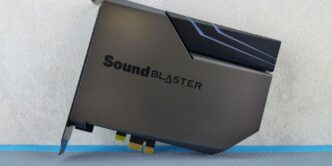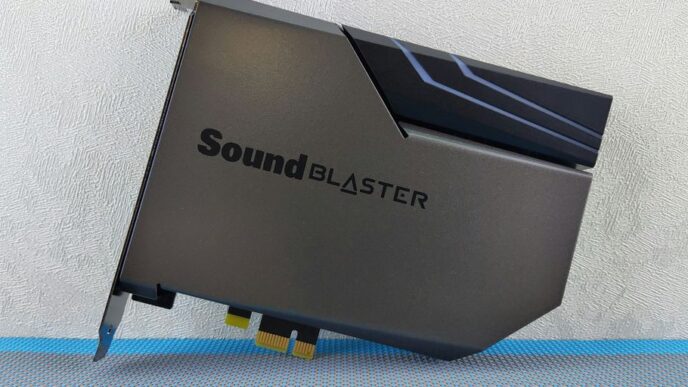So, you’re probably wondering what the deal is with Android 14 and how much it’s gonna cost you. Well, here’s the thing: Android itself is free. You don’t ‘buy’ the operating system. Instead, the ‘android 14 price’ really means the cost of the phone that comes with it. This article breaks down which phones are getting the update and what that means for your wallet, whether you’re looking at a new device or just hoping your current one gets the latest software.
Key Takeaways
- Android 14 is a free software update; the ‘price’ refers to the cost of compatible phones.
- Google’s Pixel phones were the first to get Android 14, and newer models like the Pixel 8 series come with a promise of seven years of updates.
- Samsung is rolling out its OneUI 6.0 (based on Android 14) to many Galaxy S and Z series phones, often with specific release dates.
- Other phone makers like OnePlus, Oppo, and Nothing have started pushing out Android 14, with some offering beta programs for early access.
- For brands like Asus, Motorola, and Nokia, getting Android 14 can be a bit of a guessing game, as their update schedules are less clear, meaning the ‘android 14 price’ for these might involve waiting or buying a newer model.
Understanding Android 14 Pricing
It’s tricky to talk about the "price" of Android 14 in the same way you’d discuss the cost of a new phone. Android itself is an open-source operating system, so Google doesn’t charge manufacturers to use it. The real question is how the update to Android 14 will affect the overall price and value of different devices upcoming smartphones.
The Android 14 Release Date
Android 14 officially launched on October 4, 2023. Google’s Pixel phones were, naturally, the first to receive the update. However, the rollout to other manufacturers’ devices is a more complex process. Each company has its own schedule and testing procedures, which can significantly impact when (and if) a particular phone gets the update. This staggered release is a key factor in understanding the perceived "price" – a newer phone with Android 14 out-of-the-box is inherently more valuable than an older one that might never see the update.
Android 14’s Internal Codename
Google has a tradition of using dessert-themed codenames for its Android releases internally. While the public-facing name is simply "Android 14," the internal codename is "Upside Down Cake." This doesn’t directly affect pricing, but it’s a fun bit of trivia that highlights Google’s approach to development. It’s a reminder that even something as technical as an OS has a human touch behind it. It’s also worth noting that these codenames are often used within the Android engineering teams.
Key Features of Android 14
Android 14 brings a bunch of improvements and new features. These include:
- Better battery management: Android 14 is designed to be more efficient, potentially extending battery life on devices. This is a big deal for users, as battery life is a common pain point.
- Enhanced privacy features: Google is always working to improve user privacy, and Android 14 includes new tools and settings to give users more control over their data.
- Health Connect integration: The Health Connect app health apps is now built directly into Android 14, making it easier to manage health data from different sources in one place.
- Regional Preferences: Allows you to set preferred units for temperature and the first day of the week.
These features contribute to the overall value proposition of a phone running Android 14. A device with these features is generally seen as more desirable, which can influence its price, especially in the used market. The absence of these features on older devices might make them seem less appealing, effectively lowering their perceived value.
Google Pixel Devices and Android 14 Price

Google’s Pixel lineup is always first in line for the newest Android updates, and Android 14 was no exception. Let’s break down which Pixel devices got the update and what it means for their value.
Pixel Models Supporting Android 14
If you’ve got a Pixel from the last few years, chances are you’re already running Android 14. Here’s a list of the models that received the update:
- Pixel 4a (5G)
- Pixel 5 and 5a
- Pixel 6 and 6 Pro
- Pixel 6a
- Pixel 7 and 7 Pro
- Pixel 7a
- Pixel Fold
- Pixel 8 and 8 Pro
- Pixel Tablet
Basically, if you bought a Pixel in the last couple of years, you’re good to go. It’s worth noting that the Pixel 8 and 8 Pro come with some exclusive features, like the AI wallpaper generator, which lets you create unique backgrounds using text prompts. There’s also a cinematic wallpaper feature that uses AI to add 3D motion effects to your photos. These features are exclusive to the Pixel 8 series for now.
Google’s Commitment to Software Updates
Google has really stepped up its game when it comes to software support. They’ve committed to providing seven years of software updates for the Pixel 8 and Pixel 8 Pro. This is a huge deal, especially for people who like to hold onto their phones for a while. It means you’ll get the latest features and security patches for years to come, which definitely adds value to your device. This long-term support is a welcome change, especially considering the shorter update periods we’ve seen in the past. It’s a move that should encourage other manufacturers to follow suit.
Pixel Fold and Android 14 Price
The Pixel Fold, Google’s first foray into foldable phones, also received the Android 14 update. While the update itself doesn’t directly change the price of the Pixel Fold on the used market, it does keep the device competitive. A phone with the latest software is always more appealing than one that’s stuck on an older version. Plus, with Google’s commitment to updates, the Pixel Fold will continue to get new features and improvements for years to come, making it a worthwhile investment for those interested in foldable technology.
Samsung’s Android 14 Price Strategy
Samsung is a major player in the Android world, and their approach to Android updates is always closely watched. They usually skin Android with their own One UI, and Android 14 is no exception. Let’s take a look at what to expect from Samsung’s Android 14 rollout, focusing on their update strategy and how it might affect the "price" you pay (in terms of device compatibility and update speed).
OneUI 6.0 and Android 14
Samsung’s version of Android 14 is called One UI 6.0. This update brings a refreshed look and feel, along with several new features. It’s more than just a skin; it’s a complete overhaul of the user experience. One UI 6.0 includes improvements to the quick panel, enhanced customization options, and better privacy controls. Samsung has been pretty good about pushing out One UI updates in a timely manner, at least for their flagship devices. It’s a big deal for Samsung users, and it’s something they definitely consider when buying a new phone. The One UI 7 fiasco is now well documented.
Galaxy S Series Android 14 Price
The Galaxy S series is Samsung’s flagship line, so it’s safe to assume that these devices will be among the first to receive the Android 14 update. Here’s a likely list of S series phones that will get the update:
- Galaxy S23, S23 Plus, S23 Ultra
- Galaxy S22, S22 Plus, S22 Ultra
- Galaxy S21, S21 Plus, S21 Ultra
- Galaxy S23 FE
Samsung usually supports its flagship phones for at least three major Android updates, so these models are almost guaranteed to get Android 14. The "price" here isn’t monetary, but rather the expectation that if you buy a premium phone, you’ll get timely updates. It’s a key selling point for Samsung.
Galaxy Z Series Android 14 Price
The Galaxy Z series, Samsung’s foldable phones, are also high-end devices and will definitely get the Android 14 treatment. Expect these models to be updated:
- Galaxy Z Flip 5, Z Fold 5
- Galaxy Z Flip 4, Z Fold
These phones represent Samsung’s commitment to innovation, and keeping them up-to-date with the latest software is part of that commitment. The price of these phones is high, so users expect top-notch support. Samsung knows this, and they usually deliver. It’s all about maintaining that premium brand image. The Android 15-based One UI update was finally released after nine long months of delay.
Other Manufacturers and Android 14 Price
Android 14 isn’t just for the big names like Google, Samsung, and Asus. Other manufacturers are also working on bringing the latest Android experience to their devices. Let’s take a look at what OnePlus, Oppo, and Nothing are planning.
OnePlus Android 14 Rollout
OnePlus is usually pretty quick with its Android updates. They often have a beta program that allows users to test out the new software before the official release. Here’s a general idea of what to expect:
- Flagship devices (OnePlus 11, OnePlus 10 Pro, etc.) will likely be among the first to receive the update.
- Nord series phones (Nord N30, Nord CE 3, etc.) should follow shortly after.
- Older models might get the update, but it could take longer.
It’s always a good idea to keep an eye on the OnePlus forums for official announcements and timelines. Many OnePlus owners are eager to get the latest features.
Oppo’s Android 14 Availability
Oppo has a wide range of devices, so the Android 14 rollout will likely be staggered. Oppo’s ColorOS, their custom Android skin, will be updated to version based on Android 14. Here’s what we know:
- The Find X series (Find X6 Pro, Find X5 Pro, etc.) will probably be prioritized.
- The Reno series (Reno 10, Reno 9, etc.) should also get the update.
- Some of the A series phones might receive it, but it’s not guaranteed.
Oppo often provides a list of devices that will be getting the update on their website or social media channels. The Android 14 release date was October 4, 2023, so many manufacturers are already rolling out updates.
Nothing Phone and Android 14 Price
Nothing is a relatively new player in the smartphone market, but they’ve made a splash with their unique design and focus on simplicity. The Nothing Phone (1) and Nothing Phone (2) are expected to receive the Android 14 update. Nothing is committed to providing timely updates, so users can anticipate the update to arrive relatively soon after Google’s official release. The company’s commitment to a clean Android experience means that the update should be relatively straightforward, without too many customizations that could delay the process. It’s worth checking their official channels for specific timelines and details about the Nothing Phone update.
Expected Android 14 Price for Asus Devices
Asus isn’t exactly setting any speed records when it comes to Android updates. They don’t have a ton of devices to test, but still, things are moving slowly. There’s no public beta program, and only a handful of their newest phones have actually gotten the update. It’s kind of a guessing game to know if you’ll get the update, beyond their promise of "multiple Android generations" when a phone launches. Let’s break down what we know.
Asus Zenfone 10 Update Status
Good news for Zenfone 10 owners! The Android 14 update is already rolling out. If you have this phone, you should be seeing the update notification soon, if you haven’t already. It’s always a relief when the update actually arrives.
ROG Phone Series Android 14 Price
For the ROG Phone series, things are a bit more vague. Here’s what we know about the expected timing:
- ROG Phone 7 and 7 Ultimate: Expected early 2024. (These should have already received the update)
- ROG Phone 6, 6 Pro, 6D, 6D Ultimate: Expected Q2 2024. (These should have already received the update)
It’s important to keep in mind that these are just estimates, and the actual rollout could vary depending on your region and carrier. Keep an eye on the Android 14 release date for more information.
Asus’s Update Commitment
Asus has committed to providing multiple Android version updates for its devices, but the specifics can be a little unclear. Here’s what we can generally expect:
- Flagship phones (like the Zenfone series) typically get at least two major Android updates.
- Gaming phones (like the ROG Phone series) usually get similar support, given their high-end nature.
- Mid-range and budget phones may get only one major update, or security patches for a limited time.
It’s always best to check the official Asus website or contact their customer support for the most up-to-date information on the update status of your specific device. It’s also worth noting that Google is pushing for longer update cycles, as Google announced its commitment to seven years of updates for the Pixel 8 series, which could influence other manufacturers to follow suit.
Motorola and Nokia Android 14 Price Outlook
Motorola’s Android 14 Plans
Motorola’s approach to Android 14 is a bit of a mystery. There’s no official list of devices slated for the update, and no beta program to give us clues. We’re mostly relying on past update patterns to guess which phones will get it. Based on those patterns, here’s a likely list:
- Motorola Razr 40 Ultra, Razr 40, Razr (2022)
- Motorola Edge 40, Edge 40 Pro
- Motorola Edge 30 series (Ultra, Fusion, Neo, Pro, etc.)
- Motorola Moto G series (G73, G53, G33, G23, G13, G82, G72, G62, G52, G42, G32)
It’s worth noting that the timing of these updates is also uncertain. Motorola hasn’t announced any specific dates, so it could be a while before some of these phones see Android 14. Keep an eye on the Motorola Edge 40 Pro forums for user reports.
Nokia’s Android 14 Update Policy
Nokia is also being pretty quiet about its Android 14 plans. The only real hint we have is that the Nokia G42 5G was spotted running a test version of Android 14. Nokia has generally been good about providing multiple Android updates, so we can expect the following models to get Android 14:
- Nokia X30
- Nokia X20, X10, X100
- Nokia XR21
- Nokia G60, G42, G22, G11 Plus
Nokia’s commitment to updates is a plus, but the lack of official announcements makes it hard to predict when these updates will actually arrive. It’s a waiting game for Nokia users. Check the Nokia X30 support page for more information.
Uncertainty in Motorola and Nokia Updates
Both Motorola and Nokia are leaving users in the dark about their Android 14 plans. This lack of transparency can be frustrating. While we can make educated guesses based on past behavior, there’s no guarantee that all the listed phones will get the update, or when they’ll get it. It’s a stark contrast to Samsung, which has been much more open about its update schedule. Hopefully, both companies will provide more clarity soon. The Android 14 release has been out for a while now, so it’s time for them to share their plans.
Honor Devices and Android 14 Price
Honor Magic Series Android 14 Price
Okay, so Honor’s in the mix, and everyone’s wondering about their Android 14 plans. It’s a bit of a guessing game, but let’s try to figure out what’s going on with the Magic series. The big question is always: how much will it cost to get the update, if anything? Usually, these updates are free, but the real cost is whether your phone even gets the update. For example, the Honor Magic V3 5G is a phone that people are hoping will get the update.
Honor’s Update Commitment
Honor says they’re committed to "multiple Android generations" for some of their phones. What does that actually mean? Well, it’s not as clear as Samsung promising specific dates, but it gives us a general idea. Here’s a list of phones that should get the update, based on that commitment:
- Honor Magic V2
- Honor Magic 5 series (5, 5 Pro, 5 Ultimate)
- Honor Magic 4 series (4, 4 Pro, 4 Ultimate)
- Honor Magic Vs
- Honor Magic 3 series (3, 3 Pro, 3 Ultimate)
- Honor Magic V
Of course, this isn’t a guarantee, but it’s a good starting point. It’s always a waiting game to see which phones actually make the cut. I’m hoping my Honor 90 gets it!
Honor’s Lack of Beta Program
Unlike some other companies, Honor doesn’t have a public beta program for Android 14. This means we don’t get to play around with early versions of the software, which is a bummer. We just have to wait for the official release. It also means that Honor is working on the update behind closed doors, so we don’t get any sneak peeks. It’s a bit frustrating, but hopefully, they’re cooking up something good. I wish they would be more transparent about their software updates, but what can you do?
Conclusion
So, what’s the deal with Android 14 and its price? Well, it’s not really about a price tag for the software itself. Android 14 is a free update for phones that can handle it. The real cost comes down to the phone you pick. Newer phones, especially the fancy ones, will have Android 14 right out of the box, but they’ll cost more. Older phones might get the update for free, but it depends on the brand and model. Basically, if you want Android 14, you’ll either need a newer phone or an older one that’s still supported. The software itself won’t make your wallet lighter.
Frequently Asked Questions
What exactly is Android 14?
Android 14 is the newest version of Google’s mobile operating system, bringing fresh features and improvements to your phone.
When did Android 14 come out?
Google officially launched Android 14 on October 4, 2023. Pixel phones were the first to get it.
Does Android 14 have a dessert name?
Android 14 is internally known as ‘Upside Down Cake,’ following Google’s tradition of naming its OS versions after desserts.
Which phones can get Android 14?
Many phones, especially newer models from Google, Samsung, OnePlus, and others, are getting or will get Android 14. It depends on your phone’s brand and model.
Do I have to pay for the Android 14 update?
Usually, Android updates are free. You won’t pay extra to get Android 14 on a compatible phone. The ‘price’ refers to the cost of a new phone that comes with it.
What are some cool new things in Android 14?
Android 14 brings better battery life, new ways to customize your phone, improved privacy settings, and clearer notifications, among other things.














